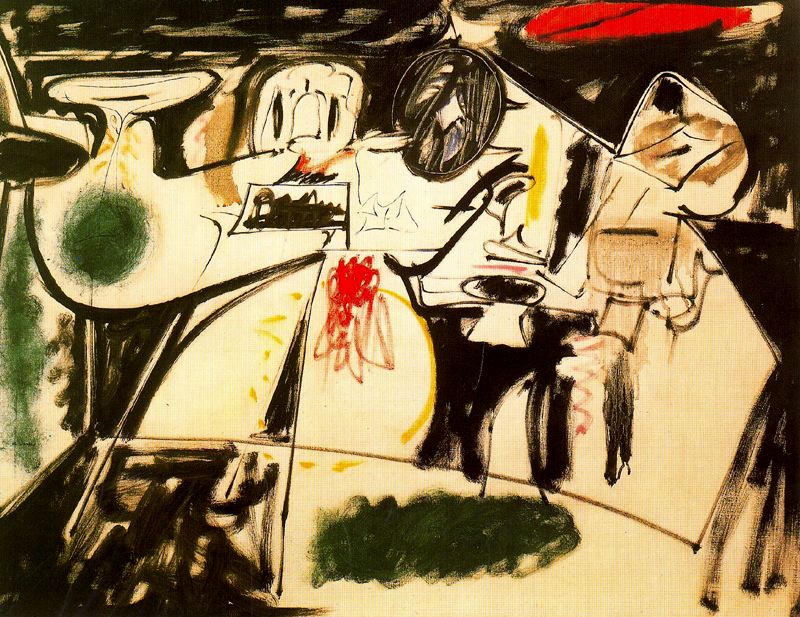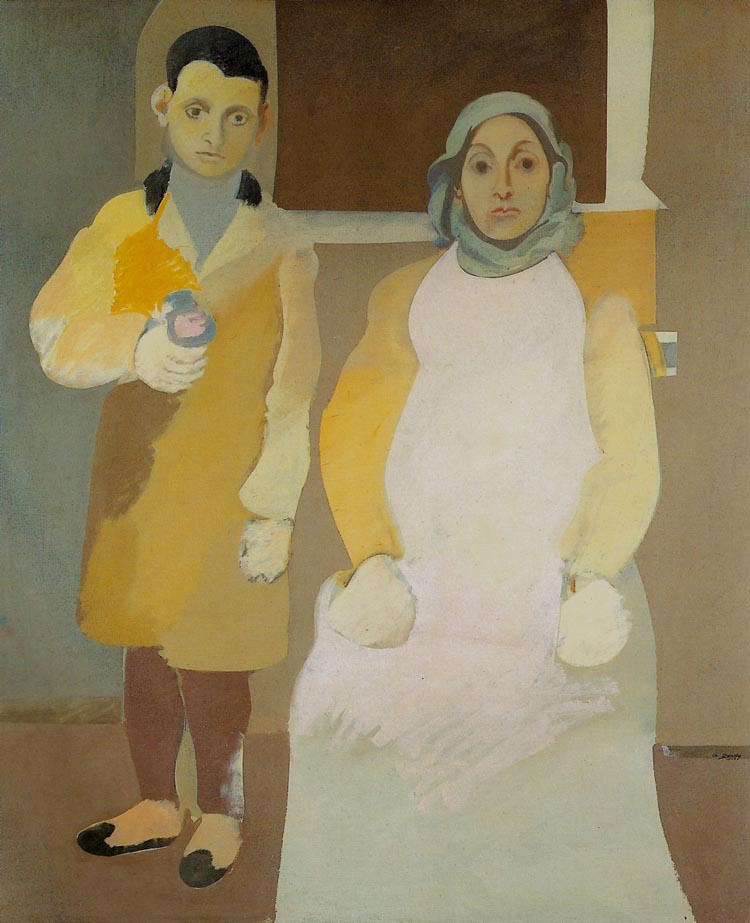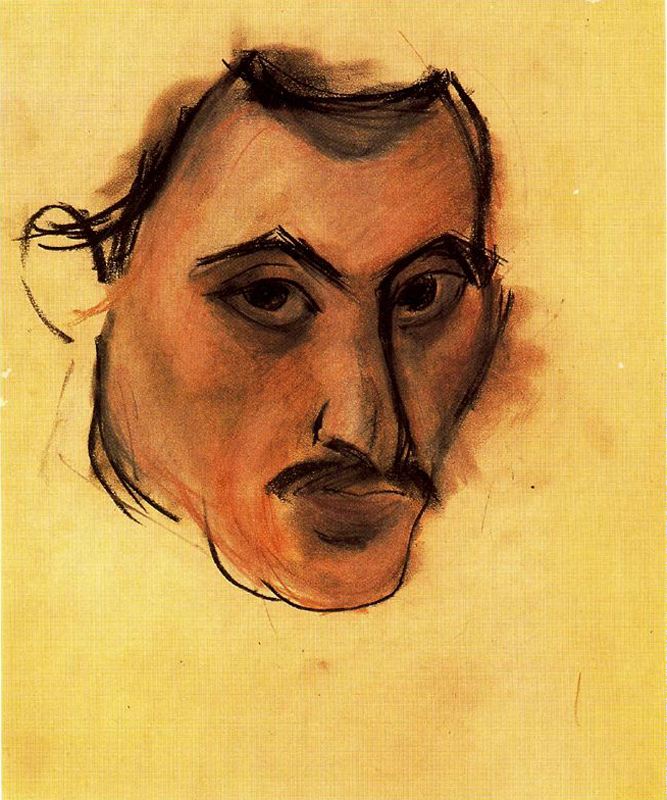 The Last Painting, 1948, Oil on canvas78,1 x 101 cmFoundation Thyssen-Bornemisza, Lugano, Switzerland
The Last Painting, 1948, Oil on canvas78,1 x 101 cmFoundation Thyssen-Bornemisza, Lugano, SwitzerlandArshile Gorky was born Vosdanik Adoian in the village of Khorkom, province of Van, Armenia, on April 15, 1904. The Adoians became refugees from the Turkish invasion; Gorky himself left Van in 1915 and arrived in the United States about March 1, 1920. He stayed with relatives in Watertown, Massachusetts, and with his father, who had settled in Providence, Rhode Island. By 1922 he lived in Watertown and taught at the New School of Design in Boston. In 1925 he moved to New York and changed his name to Arshile Gorky. He entered the Grand Central School of Art in New York as a student but soon became an instructor of drawing; from 1926 to 1931 he was a member of the faculty. Throughout the 1920s Gorky's painting was influenced by Georges Braque, Paul Cézanne, and, above all, Pablo Picasso. In 1930 Gorky's work was included in a group show at the Museum of Modern Art in New York. During the thirties he associated closely with Stuart Davis, Willem de Kooning, and John Graham; he shared a studio with de Kooning late in the decade. Gorky's first solo show took place at the Mellon Galleries in Philadelphia in 1931. From 1935 to 1937 he worked under the WPA Federal Art Project on murals for Newark Airport. His involvement with the WPA continued into 1941. Gorky's first solo show in New York was held at the Boyer Galleries in 1938. The San Francisco Museum of Art exhibited his work in 1941. In the 1940s he was profoundly affected by the work of European Surrealists, particularly Joan Miró, André Masson, and Matta. By 1944 he met André Breton and became a friend of other Surrealist emigrés in this country. Gorky's first exhibition at the Julien Levy Gallery in New York took place in 1945. From 1942 to 1948 he worked for part of each year in the countryside of Connecticut or Virginia. A succession of personal tragedies, including a fire in his studio that destroyed much of his work, a serious operation, and an automobile accident, preceded Gorky's death by suicide on July 21, 1948, in Sherman, Connecticut. Guggenheim Collection Biography
full post >>>
Vostanik Adoyan, besser bekannt unter dem Pseudonym Arshile Gorky (* 15. April 1904 [1] in Khorkom, Vari Hayoz Dzor, Vilayet Van; † 21. Juli 1948 in Sherman, Connecticut, USA) war ein aus dem heute zur Türkei gehörenden West-Armenien stammender Zeichner und Maler, der 1939 die amerikanische Staatsangehörigkeit annahm. Er war, obwohl er selbst sich der Gruppe der Surrealisten nicht zugehörig fühlte, der letzte in diese Gruppe aufgenommene Künstler. Sein Werk war wegbereitend für den Abstrakten Expressionismus. Es inspirierte die Künstler der New Yorker Schule.
Unter seinem aus der kaukasischen Form des armenischen Vornamens Arshak oder Arsakes (von persisch: kleiner Bär) und dem russischen Nachnamen Gorky (bitter) zusammengesetzten Pseudonym schuf der heimatvertriebene Künstler sich ab 1924 eine neue Identität. Er schilderte sein früheres Leben auf unterschiedliche, nicht immer wahrheitsgetreue Weise. Er nannte beispielsweise Tiflis als Geburtsort, behauptete, in Paris studiert zu haben [2] und gab sich als Mitglied der Pariser Künstlergruppe Abstraction-Création (1931-1937) aus, sowie als Angehörigen von Maxim Gorki, ohne dabei zu berücksichtigen, dass dieser ebenfalls ein Pseudonym angenommen hatte. Des Weiteren legte Gorkys Neffe Karlen Mooradian Ende der 60er und Anfang der 70er Jahre englische Übersetzungen von Briefen vor, die Gorky in armenischer Sprache an seine Schwestern geschrieben haben soll und deren Authentizität heute in Frage gestellt wird. Da sowohl Gorkys Aussagen, als auch die vermutlich gefälschten Briefe in viele Biografien einflossen, ist vor allem der Schilderung von Gorkys erstem Lebensabschnitt mit entsprechender Skepsis zu begegnen.
Wikipedia: http://de.wikipedia.org/wiki/Arshile_Gorky
 The Artist and his Mother, c. 1926-36, Oil on canvas, 52 x 127 cm, Whitney Museum of American Art, New York
The Artist and his Mother, c. 1926-36, Oil on canvas, 52 x 127 cm, Whitney Museum of American Art, New York Self-portrait, 1926, Pastel and graphite on paper, 36,2 x 28,6 cm, Private collection
Self-portrait, 1926, Pastel and graphite on paper, 36,2 x 28,6 cm, Private collection


















Thanks for posting Ralph, he was a good man, all though to call it "Art" nowadays it might mix it up with the Contemporary Shit what is done as "Art"
ReplyDelete"Art" is really a word I can not hear and see anymore, thats not the case with "Painting", "Image" or "Kunst"
Best und bis bald, Hans